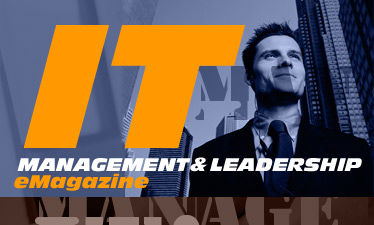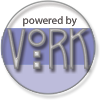Building Sustainable IT ROI
Eric David Benari, PMP, Executive Editor of the IT Management & Leadership eMagazine

When analyzing IT ROI, the ROI-sustainability factor is often overlooked. A frequent scenario involves architecture plans that call for multiple diverse technologies that may each be practical choices on their own, but are virtually incompatible together or require completely different skills/teams to integrate and maintain. To build IT ROI that proves itself beyond the planning stage it is critical that the entire IT-infrastructure, including the human-resources that interact with it, are analyzed as a whole.
Simple is sustainable.
Human-interaction is often left unaccounted for during ROI analysis. The largest expense in the majority of North American IT initiatives are the human resources. Technologies that require less training, have easier administration and can be interacted-with more rapidly will often have superior ROI. This is a concept that Apple has mastered; Mac hardware is dollar-for-dollar nowhere near as powerful as Windows-based hardware, but many people find the OS X operating system significantly easier to use and to those people the extra hardware cost is justified by the value gained in productivity.
Cheap costs more.
A prime example of unsustainable IT ROI is the attempt to reduce licensing costs by using Linux on the desktop. Some users will embrace Linux after some ROI-diminishing training and a productivity-limited ramp up period; other users will simply produce less per hour during an ongoing adaptation to an unfamiliar OS. The license cost savings would prove to be poor ROI for even minimum-wage earning employees, all the more so for those with typical professional salaries.
Best-practices are maintainable.
Estimations are substantially more accurate when proper workflow has been established. Keeping IT-teams on track through best-practice guidelines will reduce the level of unknown-factors and unnecessary project complexities. Best-practice standards exist for every facet of IT. For example, enforcing programming standards in web development will impede the growth of “spaghetti-code”, the poor-quality coding structure that plagues projects by introducing a high-level of uncertainty to every code-related task.
Planning is essential.
Fundamental to sustainable IT-project ROI is the concept of building/buying only what you need for now, but architecting so that you can expand & scale with growth later. Some new technologies really allow IT departments to embrace this; an obvious example is cloud-servers that are both elastic and instantly-reconfigurable. This convenience invites a perception that utilizing additional cheap hardware is better ROI than establishing proper scalable systems architecture. “Scaling-up” may be a solution that is immediately sufficient, but successful projects eventually outgrow this and need to be able to “scale-out”; this is where projects built without growth plans get into trouble and need to start re-architecting in order to be able to horizontally-distribute sources of bottlenecks.
Surprises are expensive.
Extensive contingency planning increases your odds of maintaining the established ROI. A fairly common initiative this year is to reduce software licensing fees by switching MS Office users to Google Docs. Web-app and SaaS initiatives come with a substantial productivity-risk as now even basic typing tasks rely on an Internet connection; thus an Internet-outage could bring a company to a grinding halt. This risk can be easily mitigated if every employee has a mobile phone that can be “tethered” to their computer and used as a backup source of Internet connection.
Security is only visible when it fails.
Nothing can dissolve ROI as rapidly as a security breach. Compromised data can be a PR-nightmare and even cause the demise of a company in extreme cases involving customer-data like credit cards or tax IDs. The challenge to preventing this is that there is no indicator of having sufficient security, just consequences of not having it. This is similar to car airbags, one would never know if they are faulty until the moment that they are most needed. Viable security solutions will vary by IT-initiative and the extent of risk, but typically should involve comprehensive internal audit processes followed by engagement of a 3rd-party security firm.
More brains are better.
Every human mind has unique areas of excellence and short-sightedness. To assure all ROI-impacting facets are accounted for, the plans of any significant IT initiative should be audited by an external advisory board. Inspection by eyes outside the organization adds an invaluable perspective and often steers project plans to greater ROI as well as exposes potential risks to account for.
Dollarization yields clarity.
The key to accurately assessing ROI over the project lifecycle is to “dollarize”, calculate the monetary-gain or loss, of every aspect of the initiative. Project expenses and potential business profits are obvious; other factors to account for include overhead of integration with current systems, learning curve for administrators and end-users, security risks, maintenance costs, potential impact to future initiatives as well as any effects on workflow efficiency.
The diligence invested in each of the aforementioned points is sure to return an IT-project with sustainable ROI while enhancing the quality of your IT-initiatives.
Reprinted with permission from the MIT CIO Corner


 Vork
Vork